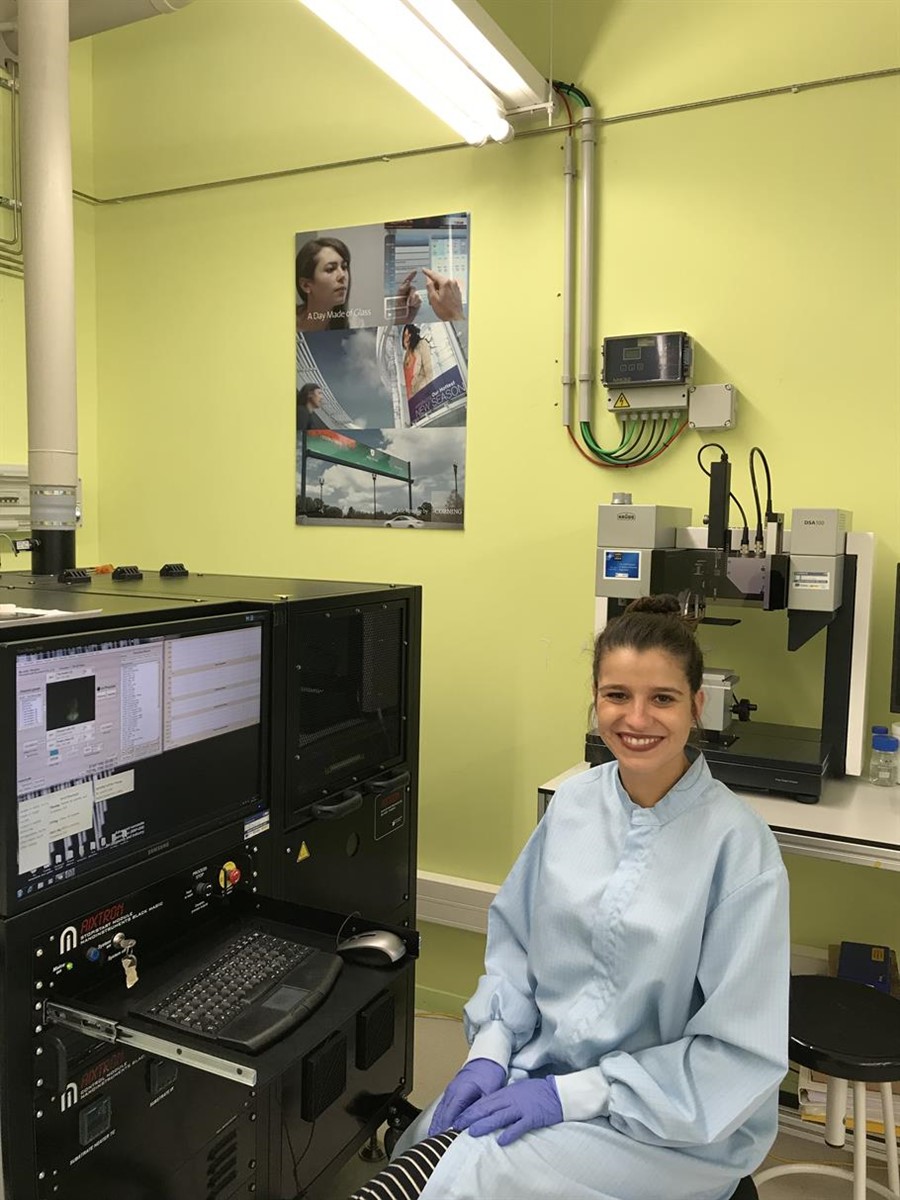Spotlight: Shining a light on up and coming researchers in the Graphenoverse
Miriam Marchena is a new graduate receiving her doctorate from the Institute of Photonic Sciences (ICFO), this summer, in Photonics. She has just started her first postdoc there.
Vital Statistics
Name: Miriam Marchena
Age: 30
Institute: Institute of Photonics Sciences (ICFO)
Here Comes the Science!
Field: Photonics
Background: Chemical Engineer
Research: Scalable techniques for graphene on glass: growth, transfer and doping control
Research Explained
The technique for implementation of graphene at the large scale is Chemical Vapour Deposition (CVD), where graphene is typically grown on copper. However, for this application, copper needs to be removed and graphene located onto the target. This transfer procedure is very challenging as after that, the properties of graphene can be altered, thus reducing its capabilities. During my thesis, my research focused on the development of a technique where graphene could be directly grown on a glass substrate using a metallic intermediate layer, which would be removed during the growth process, thus avoiding the intermediate transfer step. Depending on the area and morphology of this metal, we were able to grow large (and patterned) areas of graphene on glass, but also graphene assembled into three-dimensional shapes, widening the applications of graphene.
During an internship at Corning Incorporated (USA) I had the opportunity to develop a fast dry-transfer technique to transfer graphene from the copper foil to a desired target substrate using current industrial equipment.
Applications
Although graphene has many promising and relevant applications, we were mainly focused on graphene as a transparent electrode, as it is a material that combines lightness, high transmittance, conductivity and flexibility. The last property is what makes it very promising for wearables, making it highly promising for future technology demands.
The graphene structures developed during the thesis have not been tested yet. Their high surface area would make them suitable for alternative applications in catalysis and as membranes for water filtration.
Why academia?
For me at the beginning it was not clear, but then I was very enthusiastic in research, especially how to innovate and create things; I liked the idea of how to develop processes to make something that could improve real application. So I guess what I liked most was the innovative side of science; how to create new alternatives for doing something and how to design new ways to solve a problem and bring something new to society that could be useful.
What are your plans for the future?
So right now, I am in research, but I am considering making the change to industry later. My ideal position would be one where I can carry on doing research for applications and to develop something that could be used in society. Something very applied.
Your favourite property/fact about Graphene?
Graphene is an atomically thin material meaning you can hardly see it; yet it provides such a wide variety of applications.

Miriam Marchena is a new graduate receiving her doctorate from the Institute of Photonic Sciences (ICFO), this summer, in Photonics. She has just started her first postdoc there.




